
The hardware and bandwidth for this mirror is donated by METANET, the Webhosting and Full Service-Cloud Provider.
If you wish to report a bug, or if you are interested in having us mirror your free-software or open-source project, please feel free to contact us at mirror[@]metanet.ch.

The goal of hockeystick is to make essential Global
Heating datasets easily available in R to non-climate experts.
hockeystick users can download the latest raw data from
authoritative sources as well as view it via pre-defined ggplot2 charts.
Datasets include atmospheric CO2 and CH4, carbon
emissions, instrumental, reconstructed, and paleo ice-core temperature
records, sea levels, hurricanes, and Arctic/Antarctic sea-ice.
The choice of data was originally based on Professor Stefan Rahmstorf’s presentation on The 5 Most Important Data Sets of Climate Science. I came across this on a post on the Open Mind blog. I wrote my own post on obtaining and visualizing this data (now out of date), which is the basis for this package. Additional datasets and visualizations have been added over The name of the package stems from the well known hockeystick temperature chart.
hockeystick was highlighted on the RStudio RViews
blog by Joseph Rickert as one of the “Top 40” new packages on CRAN in
February 2021.
New in version 0.8.0: Daily temperature data from ClimateReanalyzer.com (see below).
New in version 0.7.0: Globally averaged methane (CH4) concentration from NOAA.
New in version 0.7.0: Cumulative emissions by country visualization.
New in version 0.6.0: Global CO2 emissions by region and country from GCP.
To install the latest hockeystick release from CRAN
type:
install.packages("hockeystick")You may alternatively install the development version from https://github.com/cortinah/hockeystick with:
remotes::install_github("cortinah/hockeystick@testing")Plot daily global temperatures since 1940 and current anomaly:
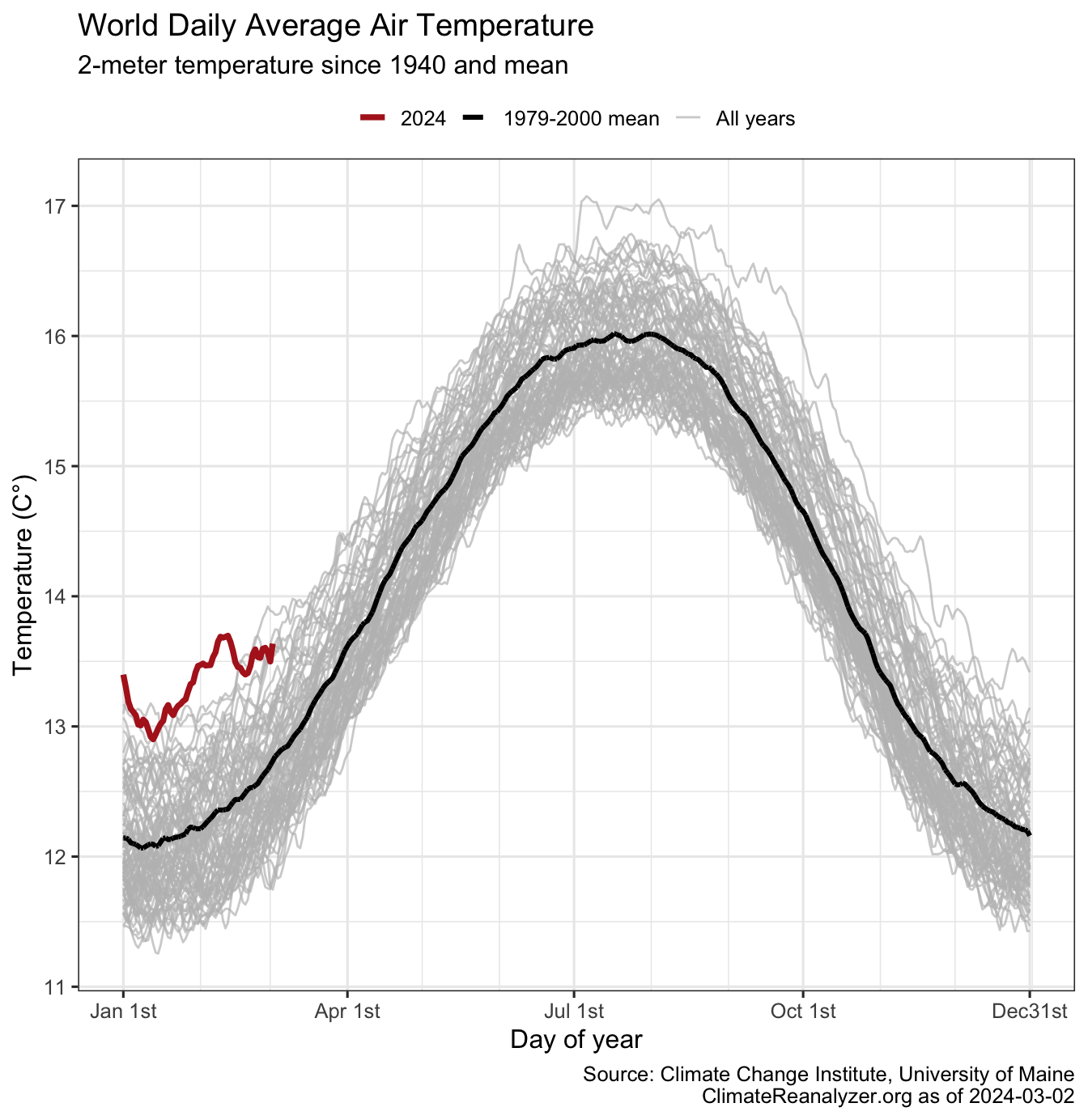
Retrieve NOAA/ESRL Mauna Loa CO2 Observatory concentration data and plot:
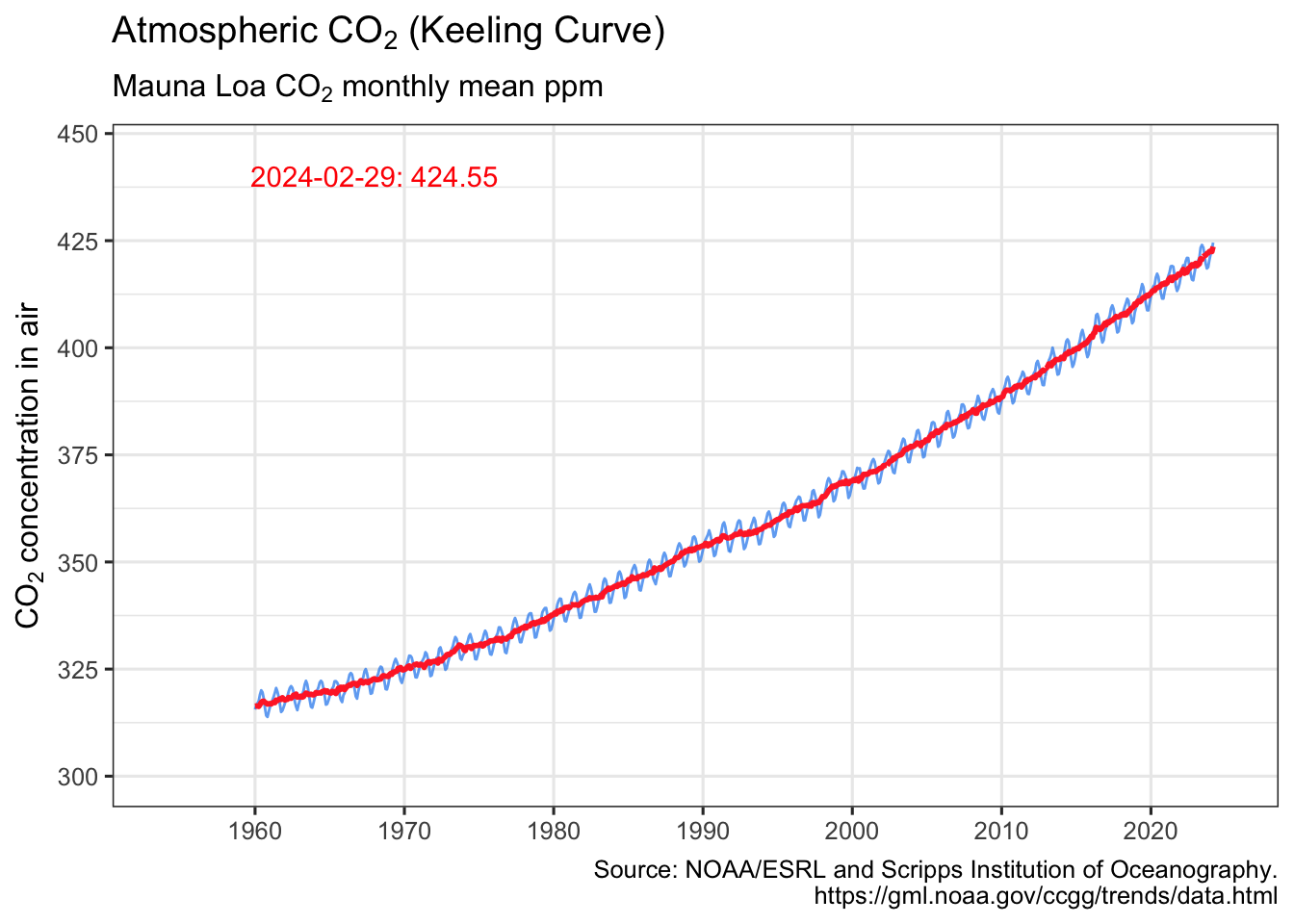
Retrieve GCP global CO2 emissions and plot:
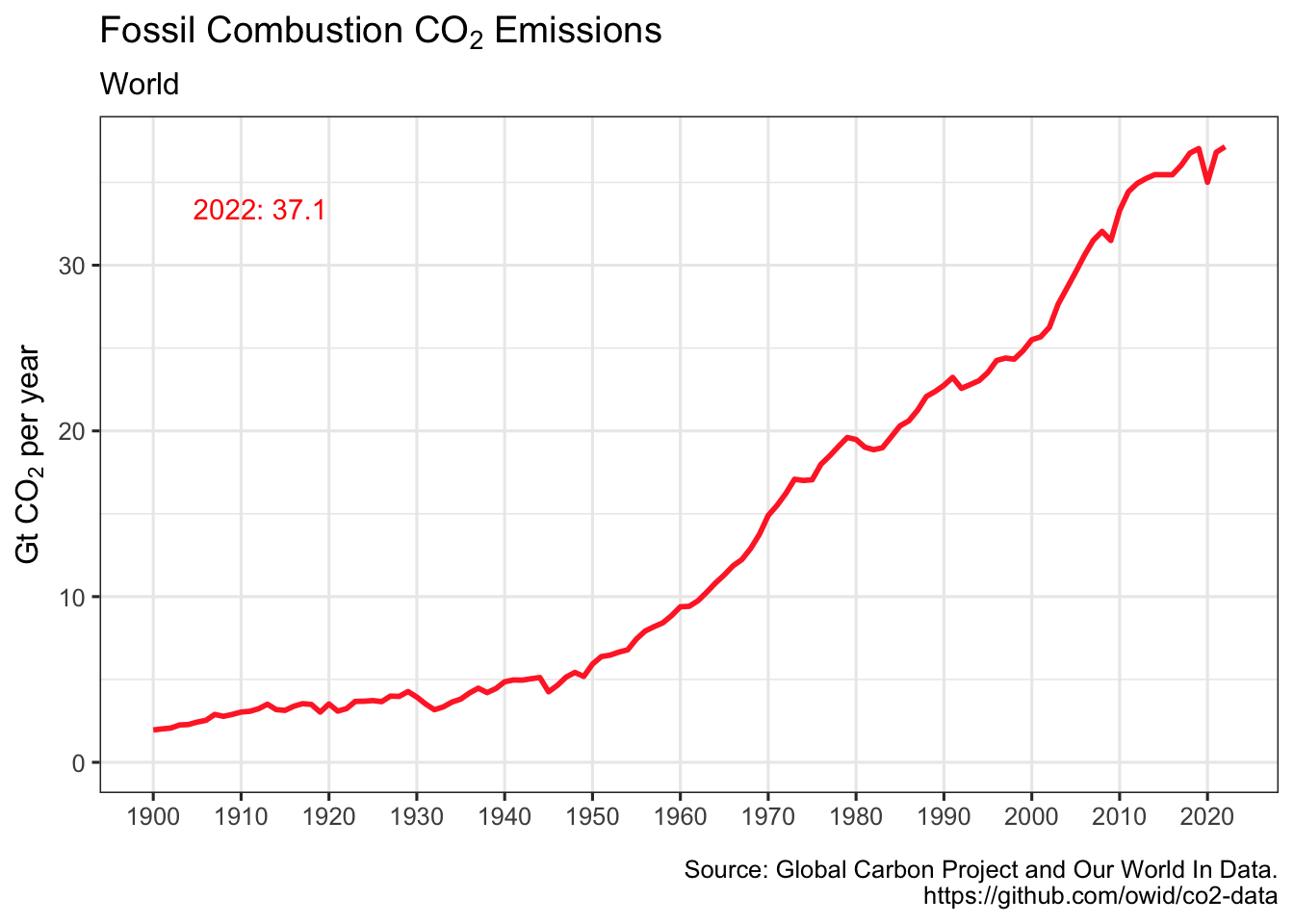
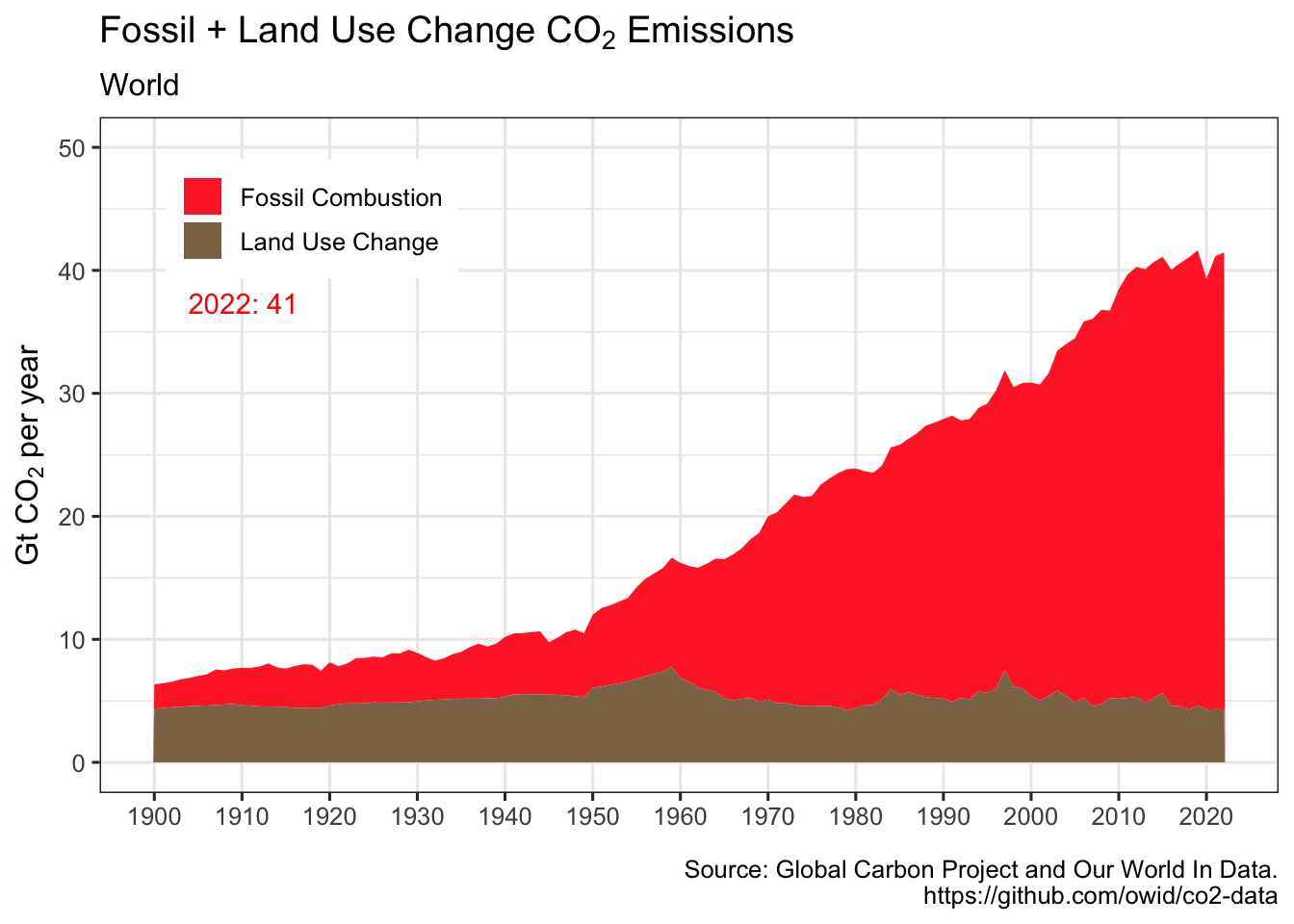
Visualize cumulative emissions by country:
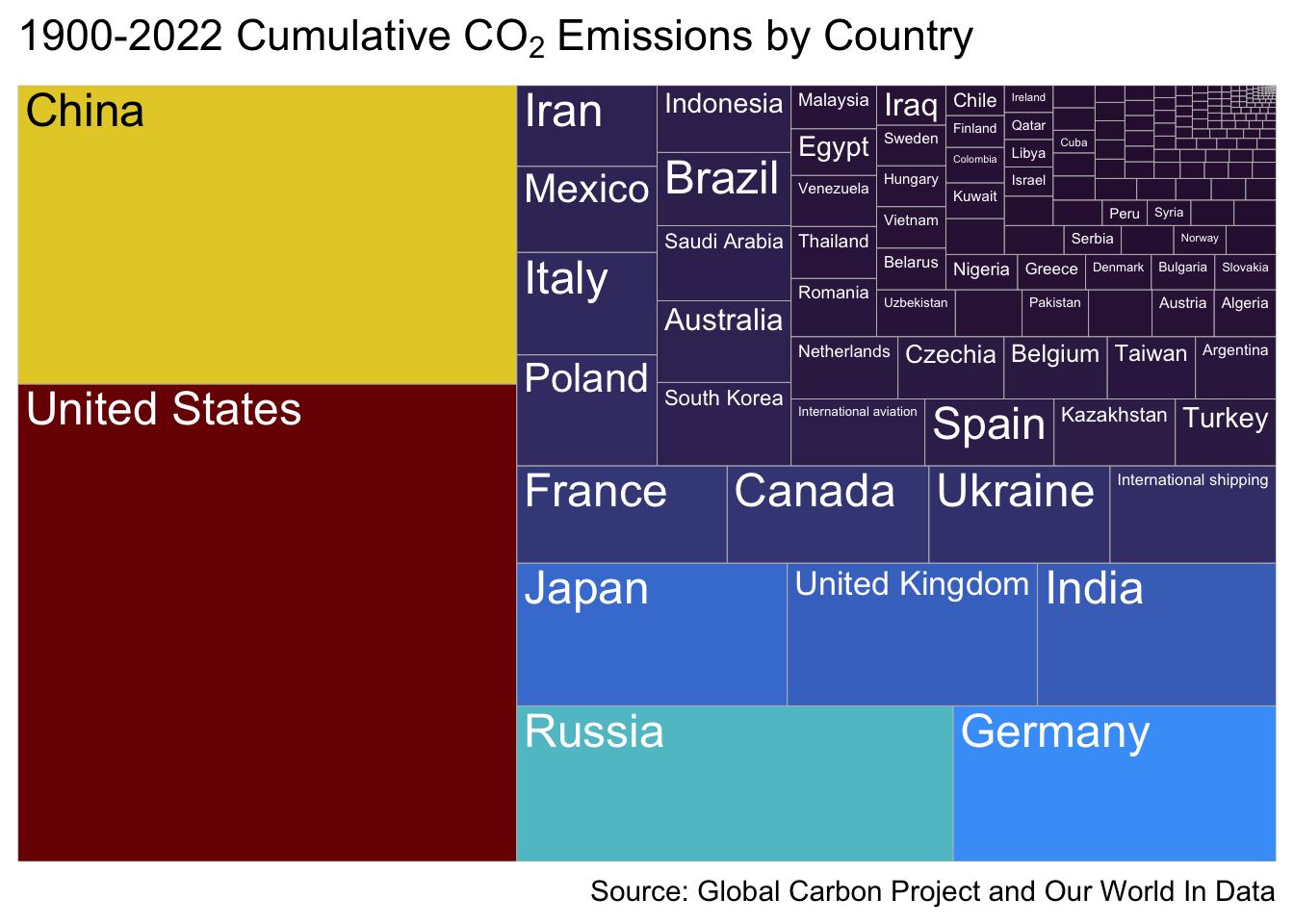
Retrieve NASA/GISS global surface temperature anomaly data and plot:

Plot relationship between temperature anomaly and carbon:
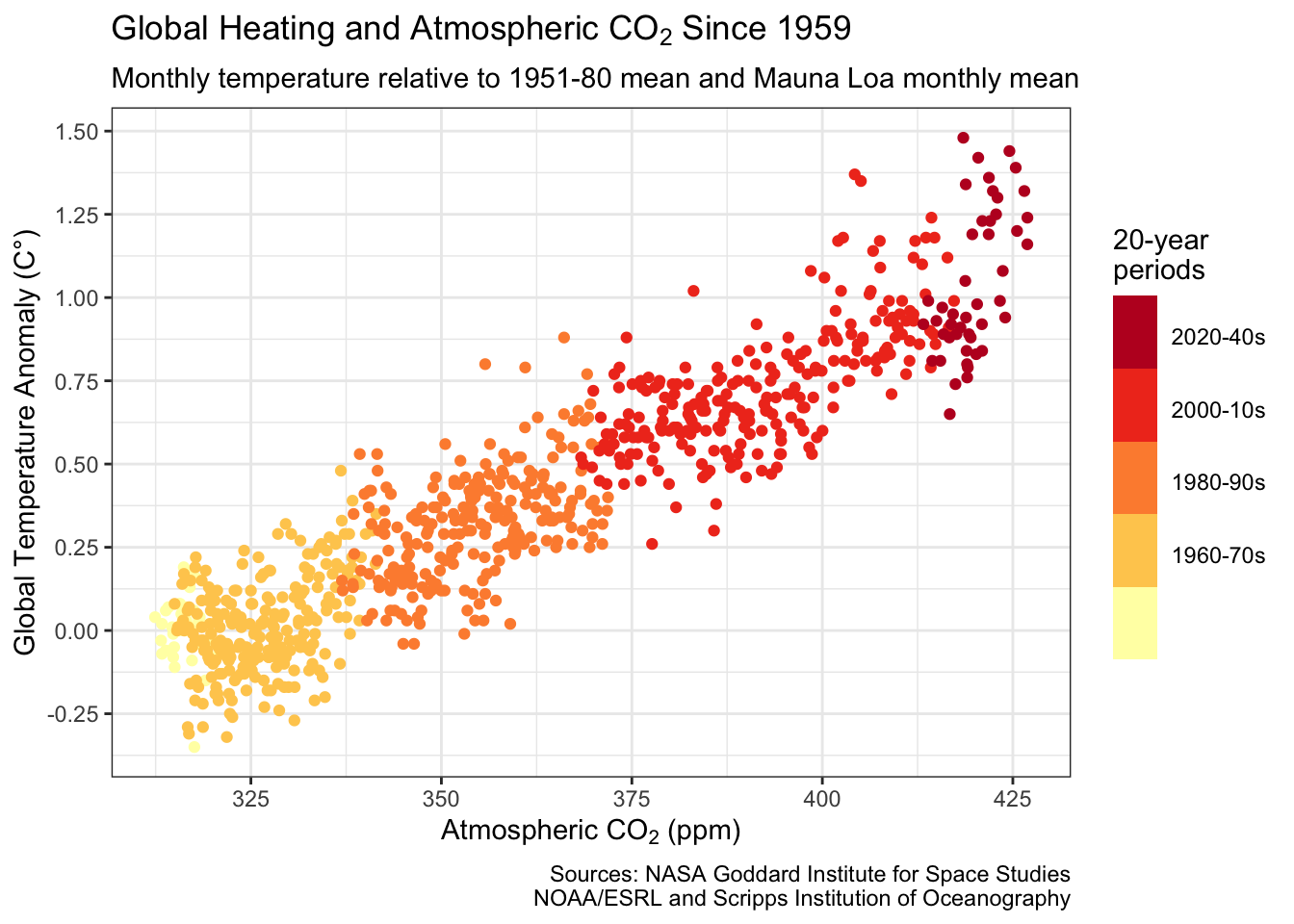
Visualize warming using Ed Hawkins styled “warming stripes”:
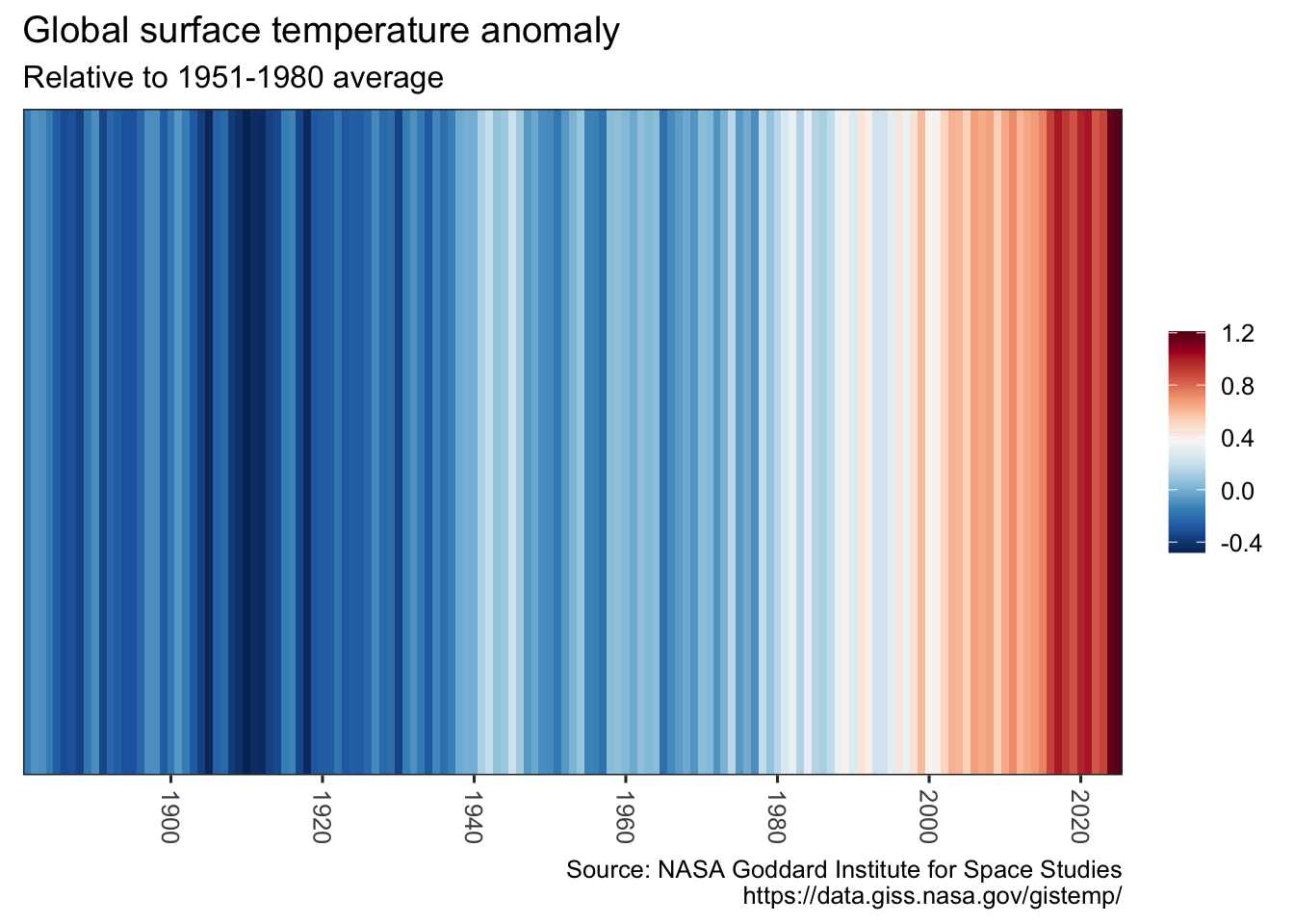

Retrieve tide gauge and satellite sea level data and plot:
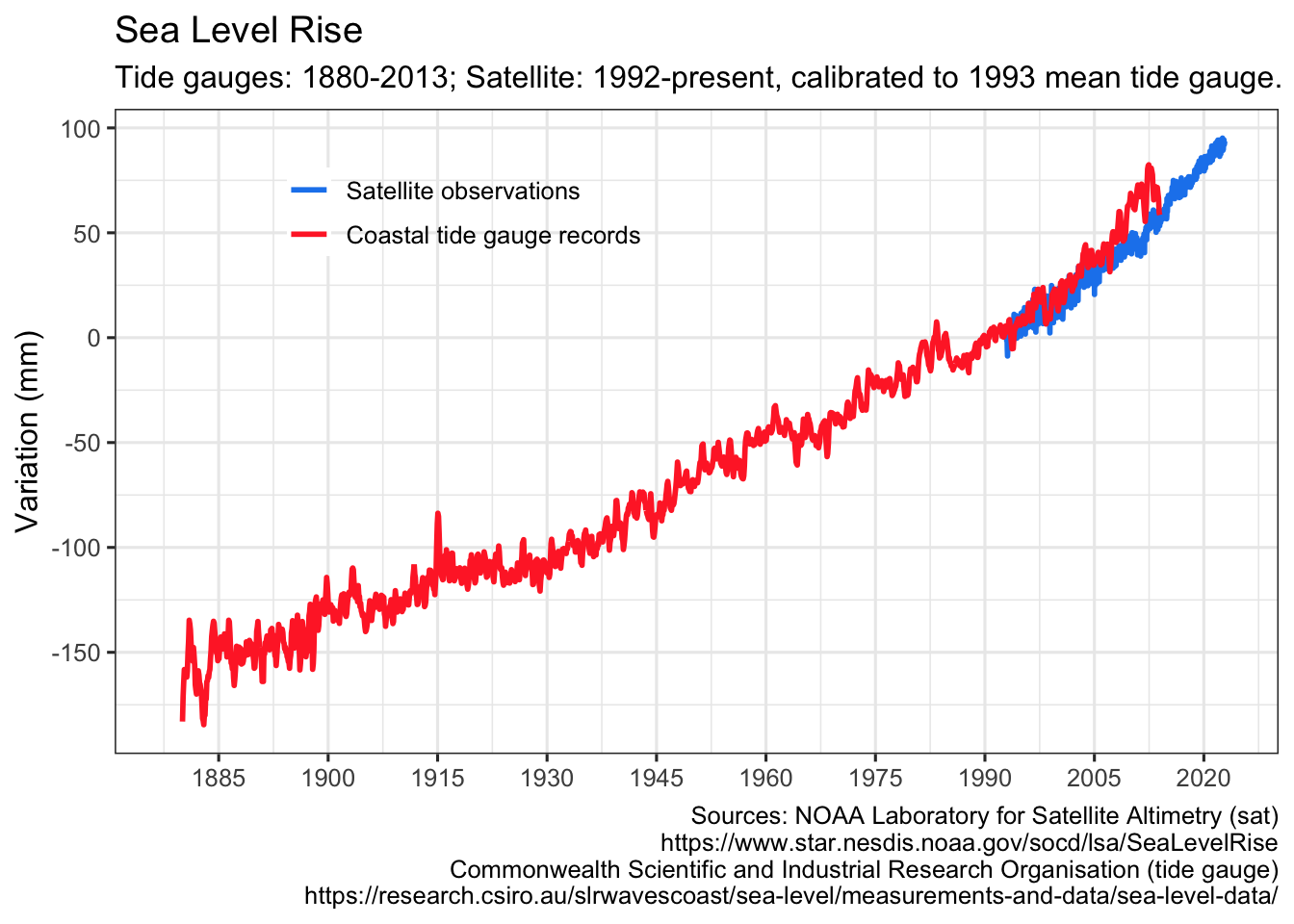
Retrieve July annual Arctic Sea Ice Index and plot:
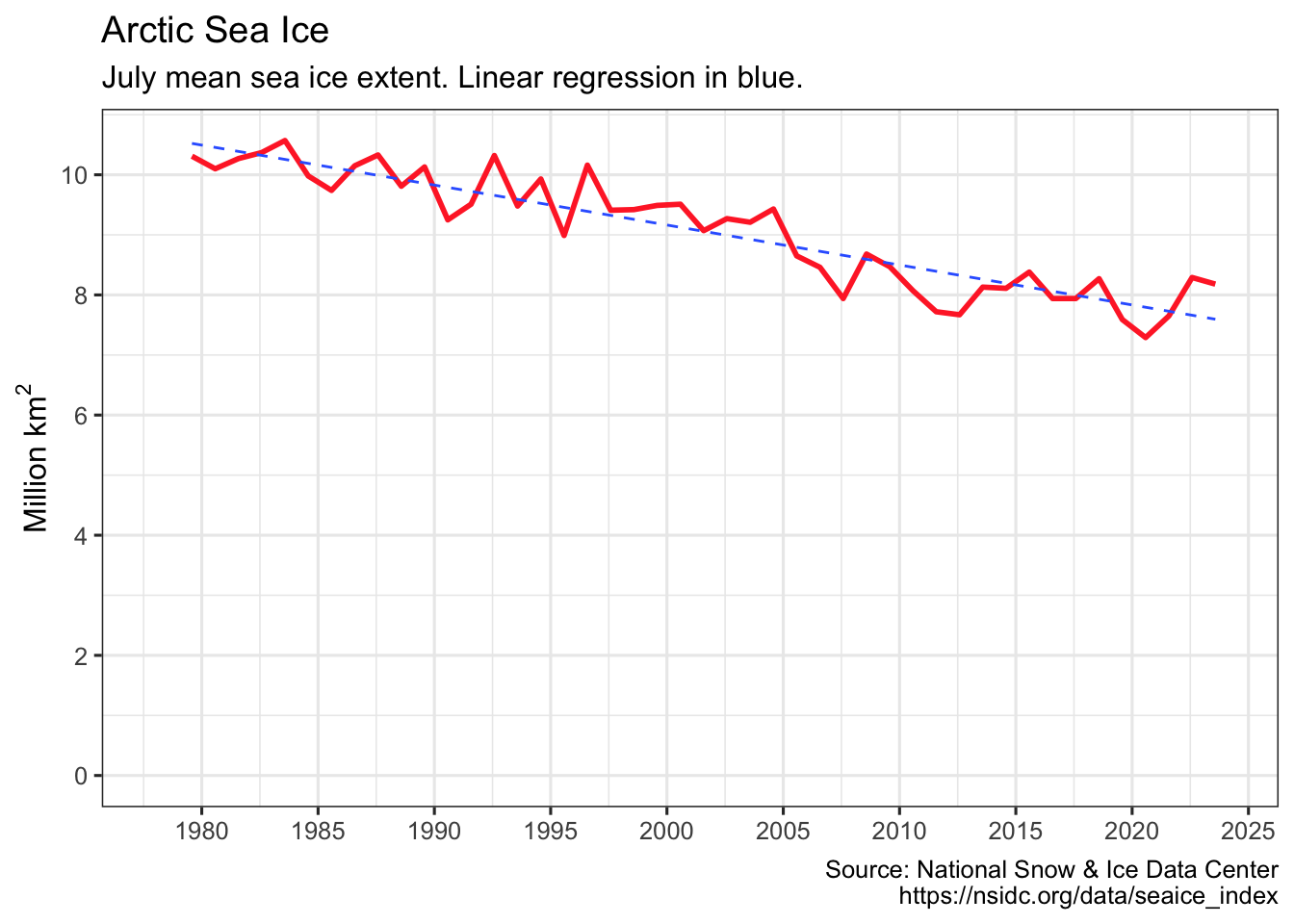
get_seaice() arguments can be modified to download
Antarctic sea ice, and allow any month.
You can also visualize sea ice by month and year:
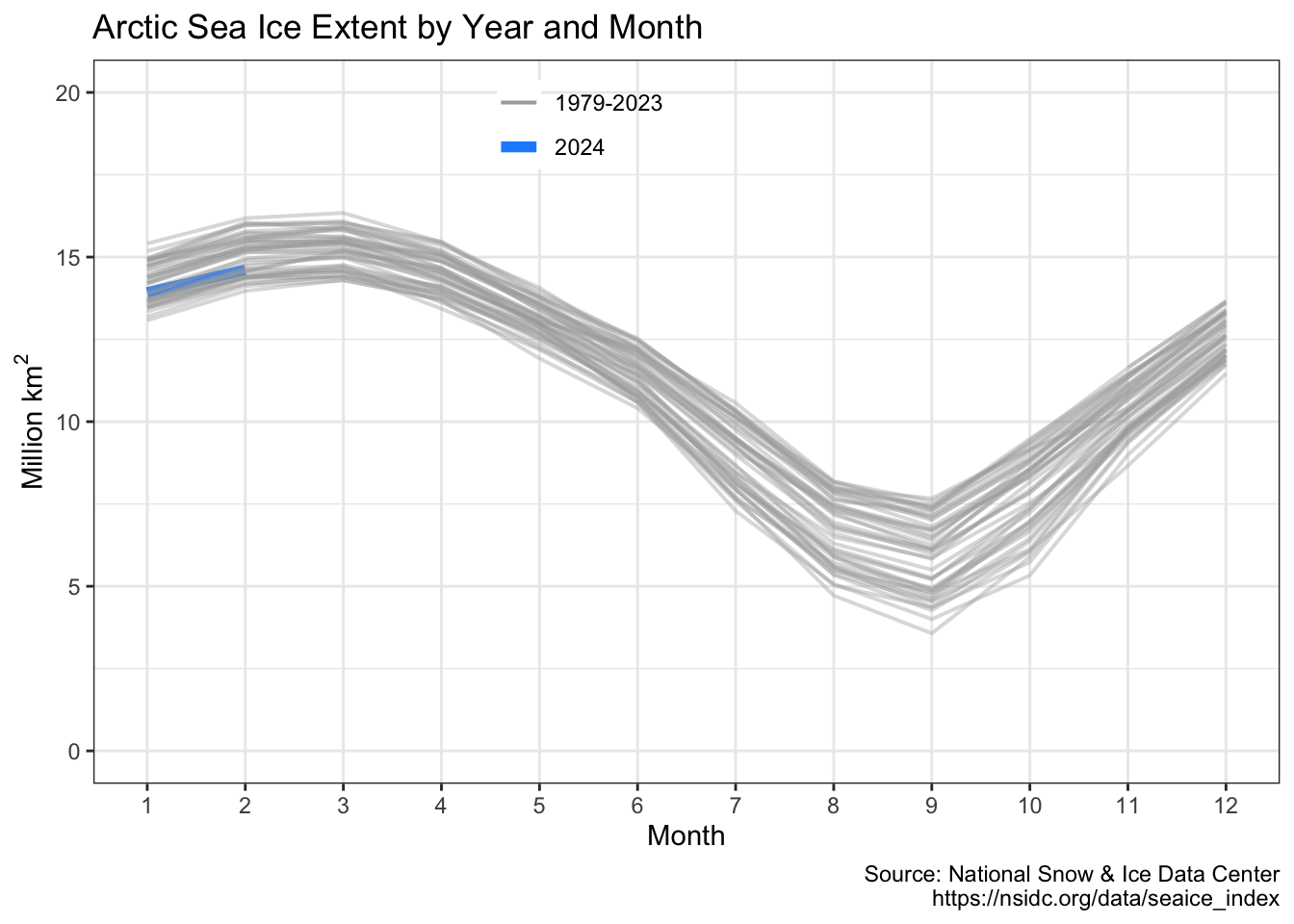
Retrieve Common Era temperature reconstruction and plot it with instrumental record:
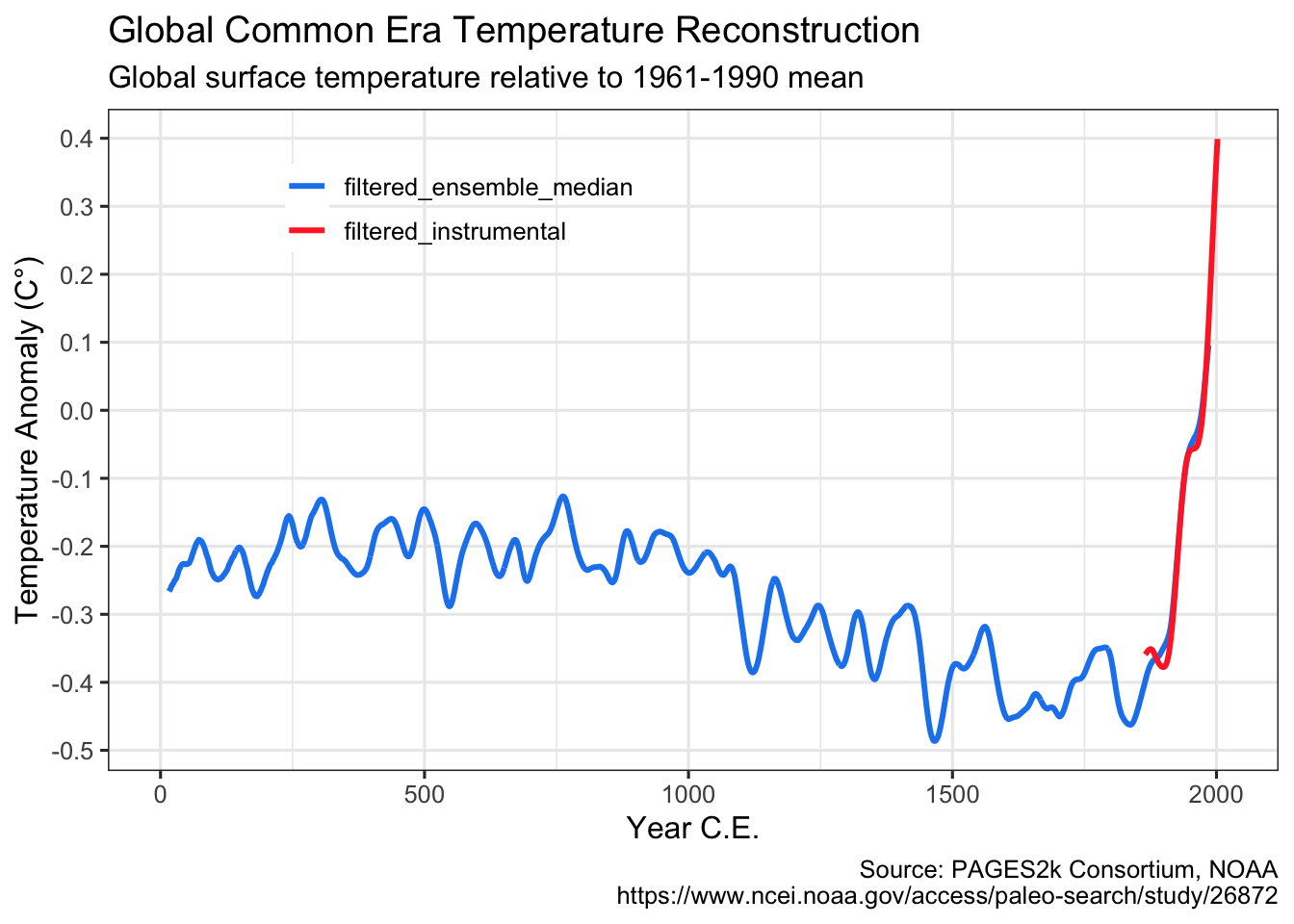
Retrieve NOAA HURDAT2 hurricane data and plot:
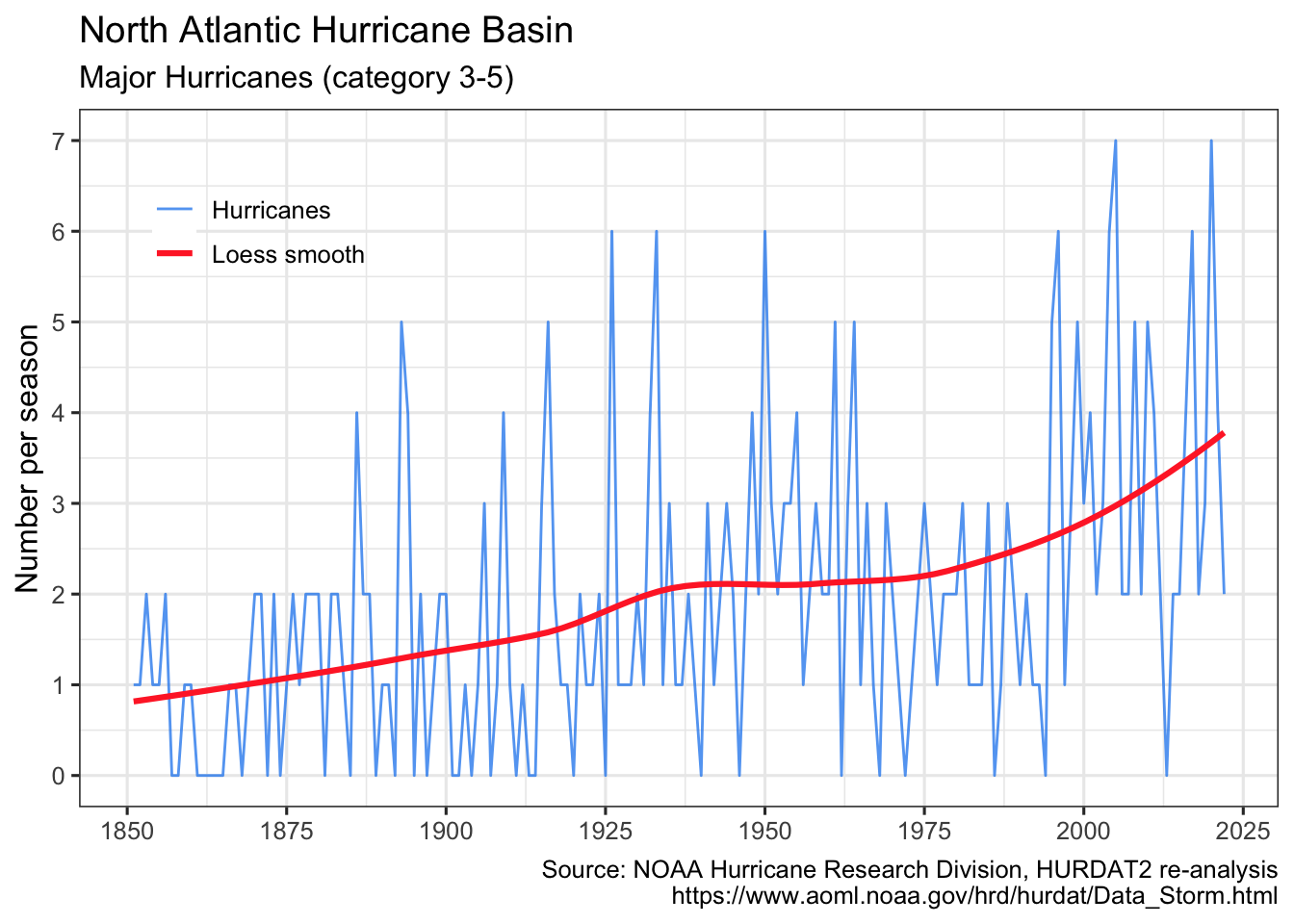
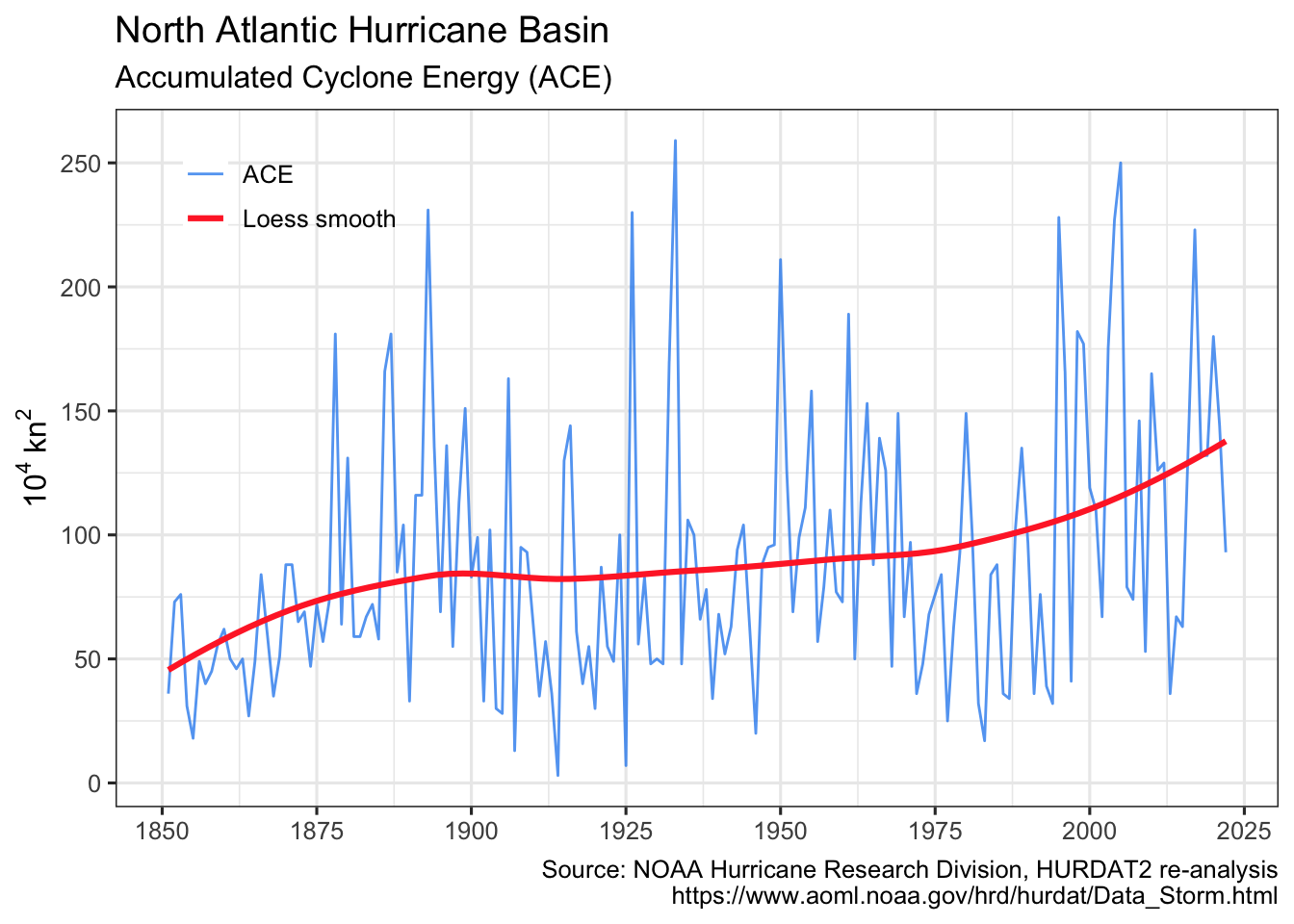
Retrieve NOAA/ESRL CH4 Globally averaged mean data and plot:
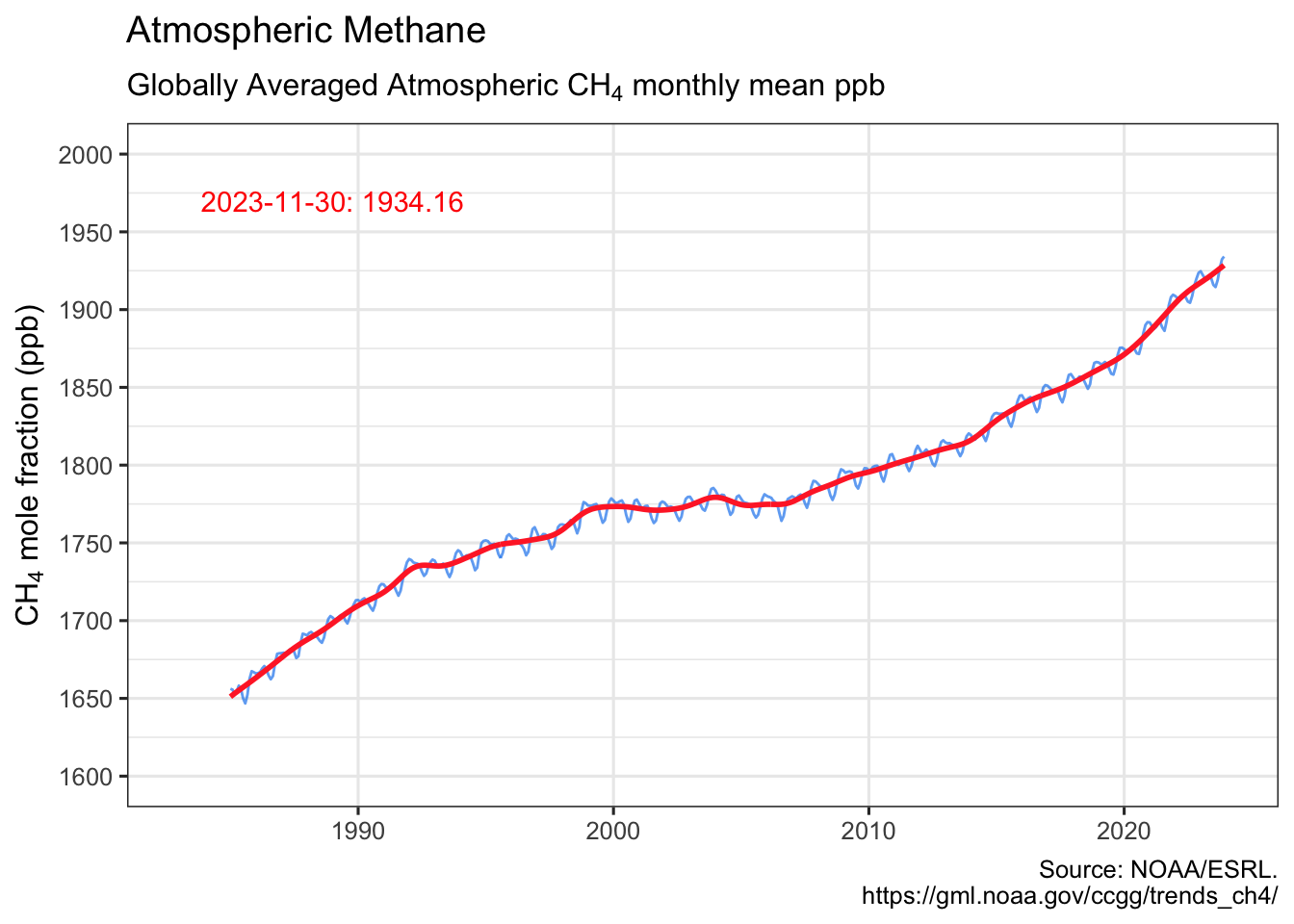
Retrieve Vostok paleo ice core data and plot:
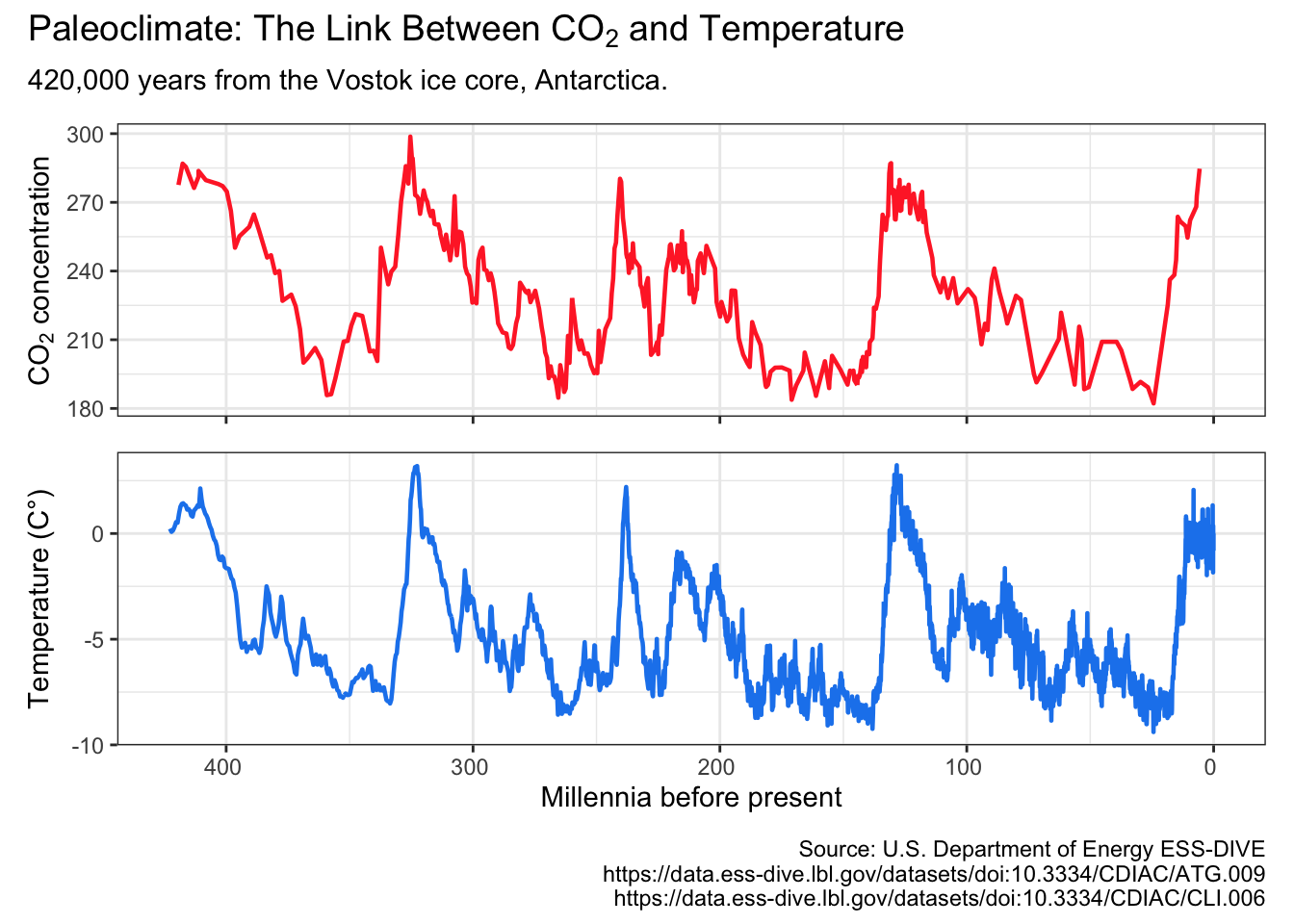
By default, no climate data is cached, and all data is downloaded
every time any of the get_ functions is called. To cache
data for future use, use the write_cache = TRUE option,
available in all of the get_ functions. To download and
cache all data use hockeystick_update_all(). To view the
files, date, and size of cached data use
hockeystick_cache_details(). To re-download data from the
source use the use_cache = FALSE argument in any of the
get_ functions, for example:
get_carbon(use_cache = FALSE, write_cache = TRUE). To
delete all cached data use
hockeystick_cache_delete_all().
Users may also cache data by default by adding
options(hs_write_cache = TRUE)to their script or
.Rprofile file.
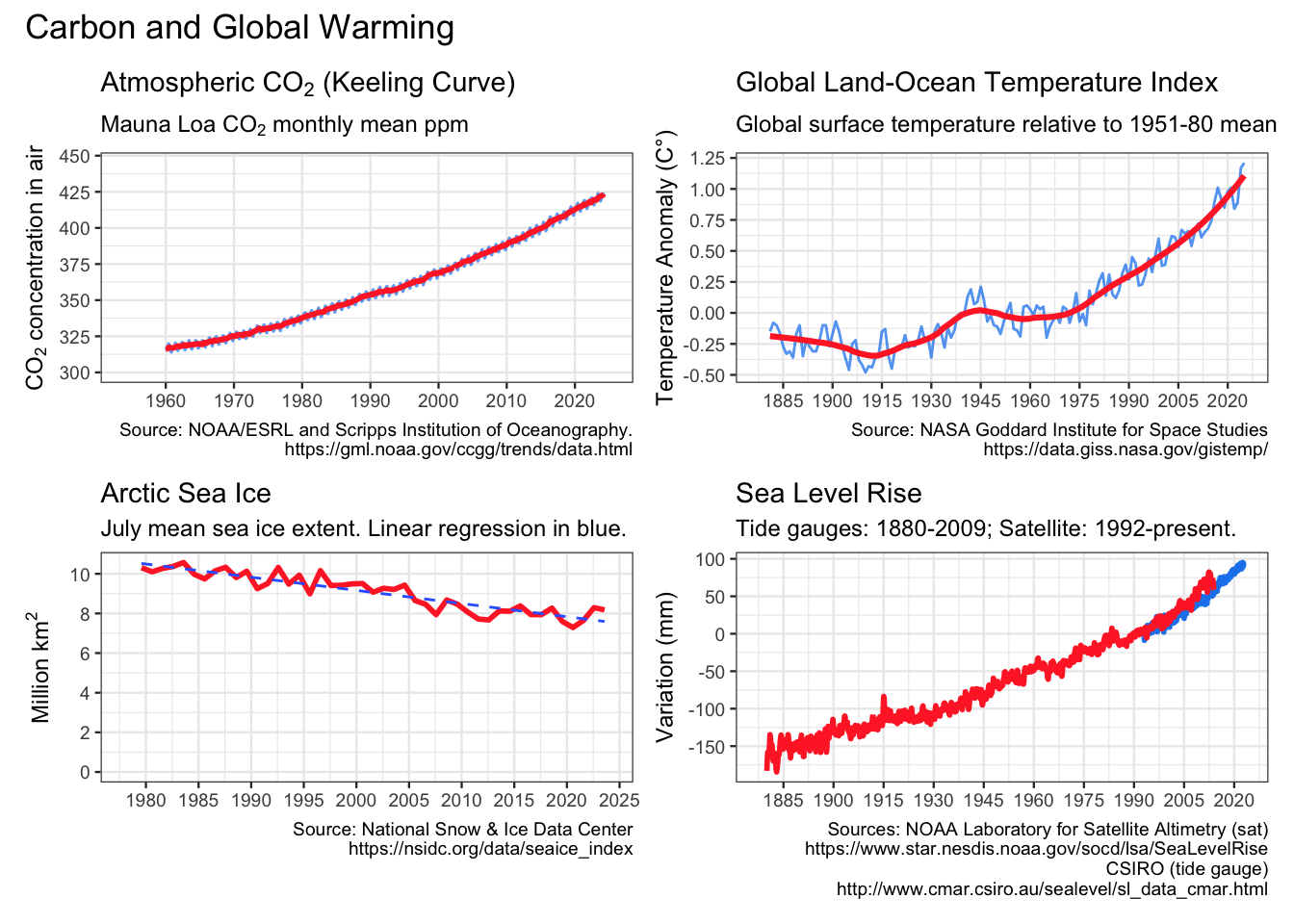
warming_stripes() is
based on. https://dominicroye.github.io/en/2018/how-to-create-warming-stripes-in-r/hockeystick is driven by my interest in tracking climate
data and making it easily available to the community.These binaries (installable software) and packages are in development.
They may not be fully stable and should be used with caution. We make no claims about them.